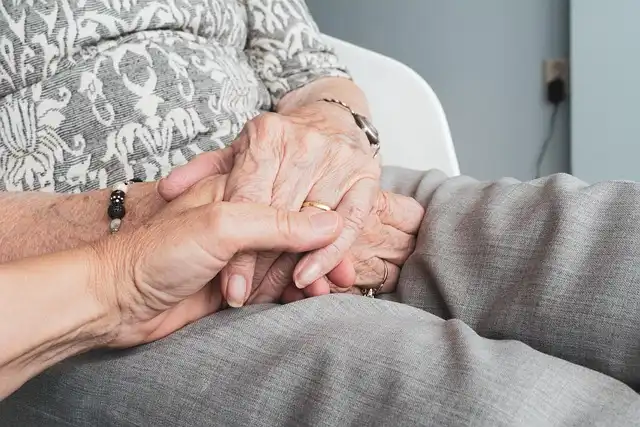Empowering Caregivers: Context-Aware ElderTech Solutions

Eldercare tech needs context-aware design, focusing on caregiver support, not just surveillance. Solutions should reduce caregiver stress, respect autonomy, and enhance overall well-being for both carers and elders.
The most reliable devices are the ones that don’t include stress and anxiety to already stretched caregivers. Caregivers shouldn’t be jolted by meaningless informs; they require to understand when something in fact needs their attention.
The Stressed Caregiver: A Design Challenge
Context-first design additionally implies appreciating autonomy. Because they really feel invasive or infantilising, many senior people decline checking systems. However when systems are unseen, non-intrusive, and just react to true abnormalities, the result is self-respect preserved on both ends.
Caregivers today are extended slim, mentally, literally, and mentally. Lots of effort to link this void with modern technology, commonly installing off-the-shelf cams or sensing units developed for home safety and security.
Lots of standard remedies still deal with caregiving like a design trouble. A bump in activity information might suggest an autumn, or it might be a person pacing due to the fact that they’re distressed. It’s translating it with empathy and nuance, especially when cognition and interaction may be jeopardized.
Aging Population: A Growing Concern
Singapore is aging. By 2030, nearly one in four citizens will certainly be matured 65 and above. That statistic is frequently cited, however much less typically challenged is what it actually indicates for individuals doing the caring. Grownups handling full-time work, elders supporting partners with decreasing health, and domestic assistants taking care of complex routines with marginal training or oversight. Caregiving is no longer a side task. It is coming to be a core column of everyday life, and our homes are not ready for it.
As eldercare becomes an expanding concern in established cultures, the discussion has to increase to include those supplying the care. Policymakers and technology contractors alike need to take into consideration caregiving as a system looking for support, one where layout, knowledge, and compassion converge.
Over months of discussions with caretakers, both informal and expert, a couple of typical threads keep emerging. Numerous are on telephone call 24/7, even if they’re not literally present. The 3rd is resistance to confusing, intrusive tech that makes their job harder, not simpler.
That statistic is usually cited, however less commonly challenged is what it really suggests for the people doing the caring. Caregivers finish up becoming part-time monitoring drivers, toggling between sense of guilt when they miss a notice and anxiousness when there are as well many. The most efficient devices are the ones that don’t include stress to already extended caretakers. Caregivers shouldn’t be jolted by useless informs; they require to recognize when something in fact requires their attention.
Caretakers end up coming to be part-time security drivers, toggling in between guilt when they miss an alert and anxiousness when there are as well numerous. They do not need to understand every time their parent shifts in bed, they require to understand if something is wrong.
That permits caretakers to do their jobs with more self-confidence, even more remainder, and more self-respect.
We typically speak of technology as equipment or software program, but also for caretakers, its most important feature may be emotional. The comfort that originates from recognizing you’ll look out only when it counts is countless.
This psychological framework is what allows a caregiver to tip away for grocery stores, to sleep through the evening, or to appear fully at the workplace without that gnawing fear in the rear of their mind. It’s not nearly saving lives in emergencies; it’s about enhancing lifestyle in the everyday.
Technology’s Emotional Role for Caretakers
What caretakers desire is straightforward: quiet, trustworthy assistance. Technology that minimizes their worry as opposed to contributing to it. Notifies that mean something. User interfaces that do not need tech fluency. And most importantly, acknowledgment that their role is vital, intricate, and deserves far better tools.
We usually discuss eldercare advancement in regards to speed, accuracy, or automation. The deeper demand is context. Elders do not live in hospitals. They reside in homes, spaces shaped by routine, autonomy, and memory. Introducing technology right into that room isn’t merely a matter of setting up sensing units or streaming video clip. It’s about understanding the rhythms of care and making systems that match lives, not just workflows. Eldertech must relocate far from surveillance-based paradigms. It ought to be made not to observe, yet to recognize. Contextual awareness, the ability to analyze activities within a broader behavioral pattern, is the frontier caregiving tech have to cross.
Contextual Awareness in Eldercare Tech
The most impactful eldertech services will be those that do not seek to replace human care, yet to safeguard it. That permits caregivers to do their work with even more confidence, even more rest, and a lot more self-respect. That elevates not just the safety of the cared for, but the health of the carer.
1 5G Technology2 caregivers
3 context-aware
4 eldercare
5 eldertech
6 well-being
« Immersive Packaging: The New Brand IntimacyHIROH: Secure Smartphone with Advanced Privacy Features »
